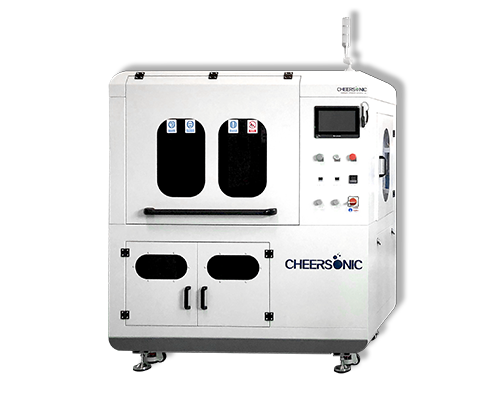Gas Sensor Characteristics
Gas Sensor Characteristics – Sensors Manufacturing Coating Systems – Cheersonic
Gas sensors are primarily used for the detection of a specific gas, measuring the presence of the gas in the vicinity of the sensor or the amount of air in the vicinity of the sensor. For this reason, gas sensors are often indispensable in safety systems.
Characteristics of gas sensors
1. Stability
Stability refers to the stability of the basic response of the sensor throughout its operating time and depends on zero-point drift and interval drift. Zero point drift is the change in sensor output response throughout the operating time in the absence of the target gas. Interval drift is the change in the output response of a sensor continuously placed in a target gas and is expressed as a reduction in the sensor output signal over the operating time. Ideally, a sensor would have a zero point drift of less than 10% per year under continuous operating conditions.
2. Sensitivity
Sensitivity is the ratio of the amount of change in the sensor output to the amount of change in the measured input and is largely dependent on the technology used in the construction of the sensor. Most gas sensors are designed using biochemical, electrochemical, physical and optical principles. The first consideration is to select a sensitive technology which is sufficiently sensitive to detect the percentage of the valve limit or minimum explosion limit of the target gas.
3. Selectivity
Selectivity is also referred to as cross-sensitivity. It can be determined by measuring the sensor response produced by a concentration of an interfering gas. This response is equivalent to the sensor response produced by a certain concentration of the target gas. This characteristic is important in applications where multiple gases are tracked, as cross-sensitivity reduces the repeatability and reliability of the measurement and the ideal sensor should have high sensitivity and high selectivity.
4. Corrosion resistance
Corrosion resistance refers to the ability of the sensor to be exposed to a high volume fraction of the target gas. The probe should be able to withstand the desired gas volume fraction 10 to 20 times when the gas is leaking in large quantities. In returning to normal operating conditions, the sensor drift and zero correction values should be as small as possible. The basic characteristics of a gas sensor, i.e. sensitivity, selectivity as well as stability, are determined primarily by the choice of materials. The selection of appropriate materials and the development of new materials optimise the sensitive characteristics of the gas sensor.

Ultrasonic coating systems are used to spray polymer films, conductive nanoparticles, or other functional materials used in sensor fabrication. These conductive nanocoatings are used in applications such as biometric security and medical device applications, as well as sensors designed for a variety of other applications including: temperature sensing, gas sensing, blood analysis device sensing, chemical detection, impedance measurement, and pressure or load sensing etc…
Cheersonic is the leading developer and manufacturer of ultrasonic coating systems for applying precise, thin film coatings to protect, strengthen or smooth surfaces on parts and components for the microelectronics/electronics, alternative energy, medical and industrial markets, including specialized glass applications in construction and automotive.
